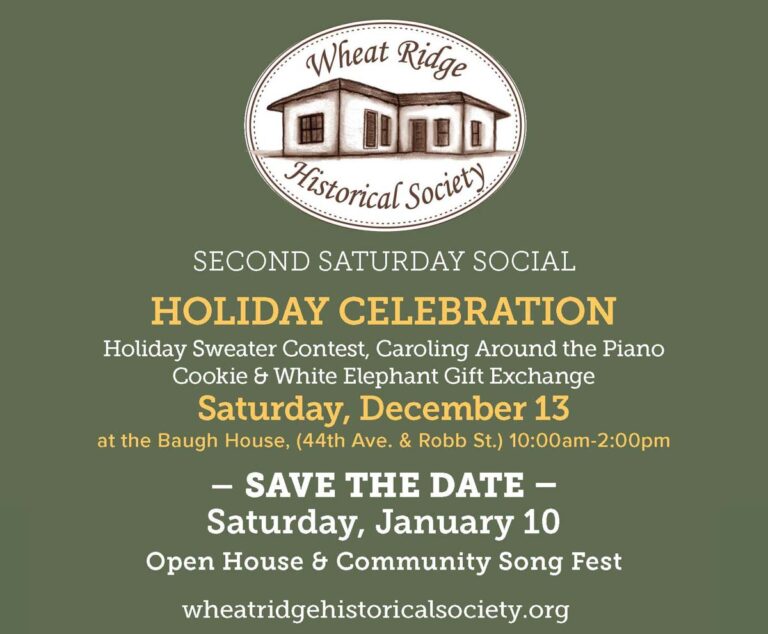This month the Historical Society celebrates one of the earliest settlers and the cabin he built, now surrounded by the farmhouse which stands at 44th and Robb Street. James Baugh stands out because of his contributions and the timing of his arrival. Baugh was the first in the area to file on a 160-acre plot just north of Clear Creek, bordering on the Prospect Trail, the main road to Golden we know as 44th Avenue.
Baugh arrived in Denver in 1859 with thousands of other men hungry for gold. Most of them migrated back home defeated, but a handful, including Baugh, stuck it out. Many turned to what they knew to make a living. Baugh knew farming, and the plot of land he filed on, a quarter-mile wide and a mile long, was planted with several acres of wheat and oats while he built his cabin, the earliest in the area.
Baugh and neighboring settlers soon dug two ditches to convey water from the Clear Creek to the fields for irrigation. The first, in 1860, was a short hand-dug ditch north of Clear Creek known as the Baugh and Lee ditch, which waters Prospect Park today. The second, larger ditch, dug in 1865, is called the Baugh-Brown ditch and still runs through the Wheat Ridge Historic Park and surrounding neighborhood.
By the 1870s Baugh was a successful farmer with over 70 acres of wheat, oats, potatoes, and garden produce under cultivation. Baugh was listed in the 1870 Golden City census, still a bachelor, but housing three steady farm workers on his property, probably in the Soddy.
By the late 1880s Baugh subdivided his farm, sold off parcels and moved to Weld County. He married in December 1890 but died in 1891, leaving a pregnant widow. The daughter he never met inherited the remaining acres of his original farm. However, one 15-acre parcel had already been sold to farmers Bert and Etta White, who lived in the Soddy and later built the White Family Home, which formed the foundation of the Historical Park.
Join the Historical Society in celebration of James Baugh and his cabin on Saturday, August 10 from 10:00-2:00. After the Carnation Festival Parade, head over to the historic Baugh House. You’ll see beautiful vintage quilts on display, and then enjoy ice cream and cake while you relax and listen to a fireman with an interesting recollection: Folks may remember the mysterious arson fire that nearly destroyed the Baugh House in January 1994, burning just as the recently deceased owner’s funeral procession traveled along 44th to Mt. Olivet Cemetery. One of the firemen who fought that blaze will share his memories of that fire. Also, noted writer and WRHS member Lee Recca will talk about the original permaculture plan for the rejuvenated Baugh property.
Don’t miss this chance to honor Baugh and his cabin home that disappeared into a farmhouse, nearly burned to the ground, then was restored to a historical gem.






